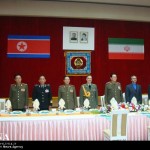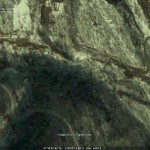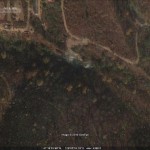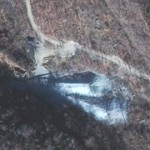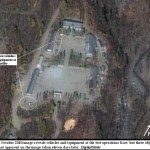Each year the “intelligence community” in the person of the Office of the Director of National Intelligence (ODNI) reports to the US Congress on the status of potential threats from across the globe.
Below I have posted the texts of these reports as they relate to the DPRK. I have also provided links to the reports themselves should you be interested in continuing your research.
FEBRUARY 10, 2011: Statement for the Record on the Worldwide Threat Assessment of the U.S. Intelligence Community for the House Permanent Select Committee on Intelligence
North Korea (p 6-7)
Pyongyang’s nuclear weapons and missile programs pose a serious threat to the security environment in East Asia, a region characterized by several great power rivalries and some of the world’s largest economies. North Korea’s export of ballistic missiles and associated materials to several countries, including Iran and Syria, and its assistance to Syria in the construction of a nuclear reactor, destroyed in 2007, illustrate the reach of the North’s proliferation activities. Despite the October 2007 Six-Party agreement in which North Korea reaffirmed its commitment not to transfer nuclear materials, technology, or know-how, we remain alert to the possibility North Korea could again export nuclear technology.We judge North Korea has tested two nuclear devices. The North’s October 2006 nuclear test is consistent with our longstanding assessment that it had produced a nuclear device, although we judge the test itself to have been a partial failure. The North’s probable nuclear test in May 2009 is consistent with our assessment that the North continued to develop nuclear weapons, and with a yield of roughly two kilotons TNT equivalent, was apparently more successful than the 2006 test. Although we judge North Korea has tested two nuclear devices, we do not know whether the North has produced nuclear weapons, but we assess it has the capability to do so.
In November 2010, North Korean officials told US visitors that North Korea is building its own light water reactor (LWR) for electricity production. The claimed prototype LWR has a planned power of 100 megawatt-thermal and a target completion date of 2012. North Korean officials also told the US visitors in November that it had constructed and started operating a uranium enrichment facility at Yongbyon that they claimed was designed to produce low-enriched uranium (LEU) and support fabrication of reactor fuel for the LWR. The US visitors were shown a facility at the existing fuel fabrication complex in Yongbyon, which North Korea described as a uranium enrichment plant. North Korea further claimed the facility contained 2,000 centrifuges and was operating and producing LEU that would be used to fuel the small LWR. The North’s disclosure supports the United States’ longstanding assessment that the DPRK has pursued a uranium-enrichment capability.
We judge it is not possible the DPRK could have constructed the Yongbyon enrichment facility and begun its operation, as North Korean officials claim, in such a short period of time—less than 20 months—without having previously conducted extensive research, development, testing, fabrication, and assembly or without receiving outside assistance.
Based on the scale of the facility and the progress the DPRK has made in construction, it is likely that North Korea has been pursuing enrichment for an extended period of time. If so, there is clear prospect that DPRK has built other uranium enrichment related facilities in its territory, including likely R&D and centrifuge fabrication facilities, and other enrichment facilities. Analysts differ on the likelihood that other production-scale facilities may exist elsewhere in North Korea.
Following the Taepo Dong 1 launch in 1998, North Korea conducted launches of the Taepo Dong 2 (TD-2) in 2006 and more recently in April 2009. Despite the most recent launch’s failure in its stated mission of orbiting a small communications satellite, it successfully tested many technologies associated with an ICBM. Although both TD-2 launches ended in failure, the 2009 flight demonstrated a more complete performance than the July 2006 launch. North Korea’s progress in developing the TD-2 shows its determination to achieve long-range ballistic missile and space launch capabilities. If configured as an ICBM, the TD-2 could reach at least portions of the United States; the TD-2 or associated technologies also could be exported.
Because of deficiencies in their conventional military forces, the North’s leaders are focused on deterrence and defense. The Intelligence Community assesses Pyongyang views its nuclear capabilities as intended for deterrence, international prestige, and coercive diplomacy. We judge that North Korea would consider using nuclear weapons only under certain narrow circumstances. We also assess, albeit with low confidence, Pyongyang probably would not attempt to use nuclear weapons against US forces or territory unless it perceived its regime to be on the verge of military defeat and risked an irretrievable loss of control.
North Korea (p11-12)
We assess that North Korea‟s artillery strike on Yeonpyeong Island on 23 November was meant in part to continue burnishing successor-designate Kim Jong Un‟s leadership and military credibility among regime elites, although other strategic goals were also factors in the attack. Kim Jong Il may feel the need to conduct further provocations to achieve strategic goals and portray Jong Un as a strong, bold leader, especially if he judges elite loyalty and support are in question.Kim Jong Il has advanced preparations for his third son to succeed him, by anointing him with senior party and military positions, promoting probable key supporting characters, and having the younger Kim make his first public appearances. These steps strengthened the prospects for the 27-year old Jong Un to develop as a credible successor, but the succession process is still subject to potential vulnerabilities, especially if Kim Jong Il dies before Jong Un consolidates his authority.
The North has signaled it wants to return to a nuclear dialogue. The North probably wants to resume nuclear discussions to mitigate international sanctions, regain international economic aid, bolster its ties with China, restart bilateral negotiations with South Korea and the United States, and try to gain tacit international acceptance for its status as a nuclear weapons power.
Since 2009, Pyongyang has made a series of announcements about producing enriched uranium fuel for an indigenous light water reactor that it is building at its Yongbyon nuclear complex. In midNovember, 2010, the North showed an unofficial US delegation what it claims is an operating uranium enrichment facility located in the Yongbyon rod core production building.
North Korea‟s conventional military capabilities have eroded significantly over the past 10-15 years due to persistent food shortages, poor economic conditions, inability to replace aging weapons inventories, reduced training, and increased diversion of the military to infrastructure support. Therefore, Pyongyang increasingly relies on its nuclear program to deter external attacks on the state and to its regime. Although there are other reasons for the North to pursue its nuclear program, redressing conventional weaknesses is a major factor and one that Kim and his likely successors will not easily dismiss.
Nevertheless, the Korean People‟s Army remains a large and formidable force capable of defending the North. Also, as demonstrated by North Korean attacks on the South Korean ship Cheonan in March 2010 and Yeongpyong Island in November. North Korea is capable of conducting military operations that could potentially threaten regional stability. These operations provide Pyongyang with what the regime may see as a means to attain political goals through coercion.
The full 2010 report can be downloaded in PDF here.
FEBRUARY 2, 2010: Annual Threat Assessment of the Intelligence Community for the House Permanent Select Committee on Intelligence
North Korean WMD and Missile Programs (p14-15)
Pyongyang’s nuclear weapons and missile programs pose a serious threat to the security environment in East Asia. North Korea’s export of ballistic missiles and associated materials to several countries including Iran and Pakistan, and its assistance to Syria in the construction of a nuclear reactor, exposed in 2007, illustrate the reach of the North’s proliferation activities. Despite the Six-Party October 3, 2007 Second Phase Actions agreement in which North Korea reaffirmed its commitment not to transfer nuclear materials, technology, or know-how we remain alert to the possibility North Korea could again export nuclear technology.The North’s October 2006 nuclear test was consistent with our longstanding assessment that it had produced a nuclear device, although we judge the test itself to have been a partial failure based on its less-than-one-kiloton TNT equivalent yield. The North’s probable nuclear test in May 2009 supports its claim that it has been seeking to develop weapons, and with a yield of roughly a few kilotons TNT equivalent, was apparently more successful than the 2006 test. We judge North Korea has tested two nuclear devices, and while we do not know whether the North has produced nuclear weapons, we assess it has the capability to do so. It remains our policy that we will not accept North Korea as a nuclear weapons state, and we assess that other countries in the region remain committed to the denuclearization of North Korea as has been reflected in the Six Party Talks.
After denying a highly enriched uranium program since 2003, North Korea announced in April 2009 that it was developing uranium enrichment capability to produce fuel for a planned light water reactor (such reactors use low enriched uranium); in September it claimed its enrichment research had “entered into the completion phase”. The exact intent of these announcements is unclear, and they do not speak definitively to the technical status of the uranium enrichment program. The Intelligence Community continues to assess with high confidence North Korea has pursued a uranium enrichment capability in the past, which we assess was for weapons.
Pyongyang’s Conventional Capabilities. Before I turn the North Korean nuclear issue, I want to say a few words regarding the conventional capabilities of the Korea People’s Army (KPA). The KPA’s capabilities are limited by an aging weapons inventory, low production of military combat systems, deteriorating physical condition of soldiers, reduced training, and increasing diversion of the military to infrastructure support. Inflexible leadership, corruption, low morale, obsolescent weapons, a weak logistical system, and problems with command and control also constrain the KPA capabilities and readiness.
Because the conventional military capabilities gap between North and South Korea has become so overwhelmingly great and prospects for reversal of this gap so remote, Pyongyang relies on its nuclear program to deter external attacks on the state and to its regime. Although there are other reasons for the North to pursue its nuclear program, redressing conventional weaknesses is a major factor and one that Kim and his likely successors will not easily dismiss. Six Party Talks and Denuclearization. In addition to the TD-2 missile launch of April 2009 and the probable nuclear test of May 2009, Pyongyang’s reprocessing of fuel rods removed from its reactor as part of the disablement process appears designed to enhance its nuclear deterrent and reset the terms of any return to the negotiating table. Moreover, Pyongyang knows that its pursuit of a uranium enrichment capability has returned that issue to the agenda for any nuclear negotiations. The North has long been aware of US suspicions of a highly enriched uranium program.
We judge Kim Jong-Il seeks recognition of North Korea as a nuclear weapons power by the US and the international community. Pyongyang’s intent in pursuing dialogue at this time is to take advantage of what it perceives as an enhanced negotiating position, having demonstrated its nuclear and missile capabilities.
The full 2010 report can be downloaded in PDF here.
FEBRUARY 25, 2009: Annual Threat Assessment of the Intelligence Community for the House Permanent Select Committee on Intelligence
North Korea’s Nuclear Ambitions (p24-26)
In addition to a possible India-Pakistan conflict, Pyongyang’s nuclear ambitions and proliferation behavior threaten to destabilize East Asia. The North’s October 2006 nuclear test is consistent with our longstanding assessment that it had produced a nuclear device. Prior to the test, we assessed that North Korea produced enough plutonium for at least a half dozen nuclear weapons. The IC continues to assess North Korea has pursued a uranium enrichment capability in the past. Some in the Intelligence Community have increasing concerns that North Korea has an ongoing covert uranium enrichment program.Pyongyang probably views its nuclear weapons as being more for deterrence, international prestige, and coercive diplomacy than for warfighting and would consider using nuclear weapons only under certain narrow circumstances. We also assess Pyongyang probably would not attempt to use nuclear weapons against US forces or territory unless it perceived the regime to be on the verge of military defeat and risked an irretrievable loss of control. Progress was made, albeit painstakingly, last year in Six Party Talks; the DPRK has shut down three core facilities at Yongbyon and has completed eight of the eleven disablement steps. However, much work remains. At the latest round of talks held in December in Beijing, the DPRK refused to agree to a Six Party verification protocol needed to verify the completeness and correctness of its nuclear declaration. Since then, Pyongyang has issued hardline statements suggesting further challenges to denuclearization.
On the proliferation side, North Korea has sold ballistic missiles and associated materials to several Middle Eastern countries, including Iran, and, in our assessment, assisted Syria with the construction of a nuclear reactor. We remain concerned North Korea could again export nuclear technology. In the October 3 Second Phase Actions agreement, the DPRK reaffirmed its commitment not to transfer nuclear materials, technology, or know-how. We assess Pyongyang is less likely to risk selling nuclear weapons or weapons-quantities of fissile material than nuclear technology or less sensitive equipment to other countries or non-state actors, in part because it needs its limited fissile material for its own deterrent. Pyongyang probably also perceives that it would risk a regime-ending military confrontation with the United States if the nuclear material was used by another country or group in a nuclear strike or terrorist attacks and the United States could trace the material back to North Korea. It is possible, however, that the North might find a nuclear weapons or fissile material transfer more appealing if its own stockpile grows larger and/or it faces an extreme economic crisis where the potentially huge revenue from such a sale could help the country survive.
We assess that poor economic conditions are fueling systemic vulnerability within North Korea. Public statements by the regime emphasize the need for adequate food supplies. A relatively good fall harvest in 2008, combined with the delivery of substantial US food aid—500,000 tons of grain have been promised and about one-third of this has been delivered—probably will prevent deterioration in the food security situation during the next few months. However, we assess North Korea is still failing to come to grips with the economic downturn that began in the early 1990s and that prospects for economic recovery remain slight. In addition to food, shortages in fertilizer and energy continue to plague the economy. Investment spending appears is negligible, trade remains weak, and we see little progress toward economic reforms. Pyongyang has long been in default on a relatively large foreign debt and we assess that badly needed foreign investment will not take place unless the North comes to terms with its international creditors and conforms to internationally accepted trade and financial norms, badly needed foreign investment will not take place.
Pyongyang’s strategic posture is not helping its economy. Trade with Japan has fallen precipitously since the nuclear and missile tests of 2006, and, while commercial trade with South Korea rose in 2008, South Korean aid and tourism to the North declined due to increased North-South tensions.
Despite this poor economic performance and the many privations of the North Korean public, we see no organized opposition to Kim Jong Il’s rule and only occasional incidents of social disorder. Kim probably suffered a stroke in August that incapacitated him for several weeks, hindering his ability to operate as actively as he did before the stroke. However, his recent public activities suggest his health has improved significantly, and we assess he is making key decisions. The state’s control apparatus by all accounts remains strong, sustaining the dismal condition of human rights in North Korea.

